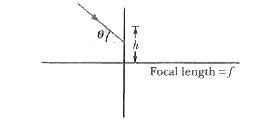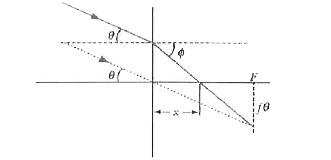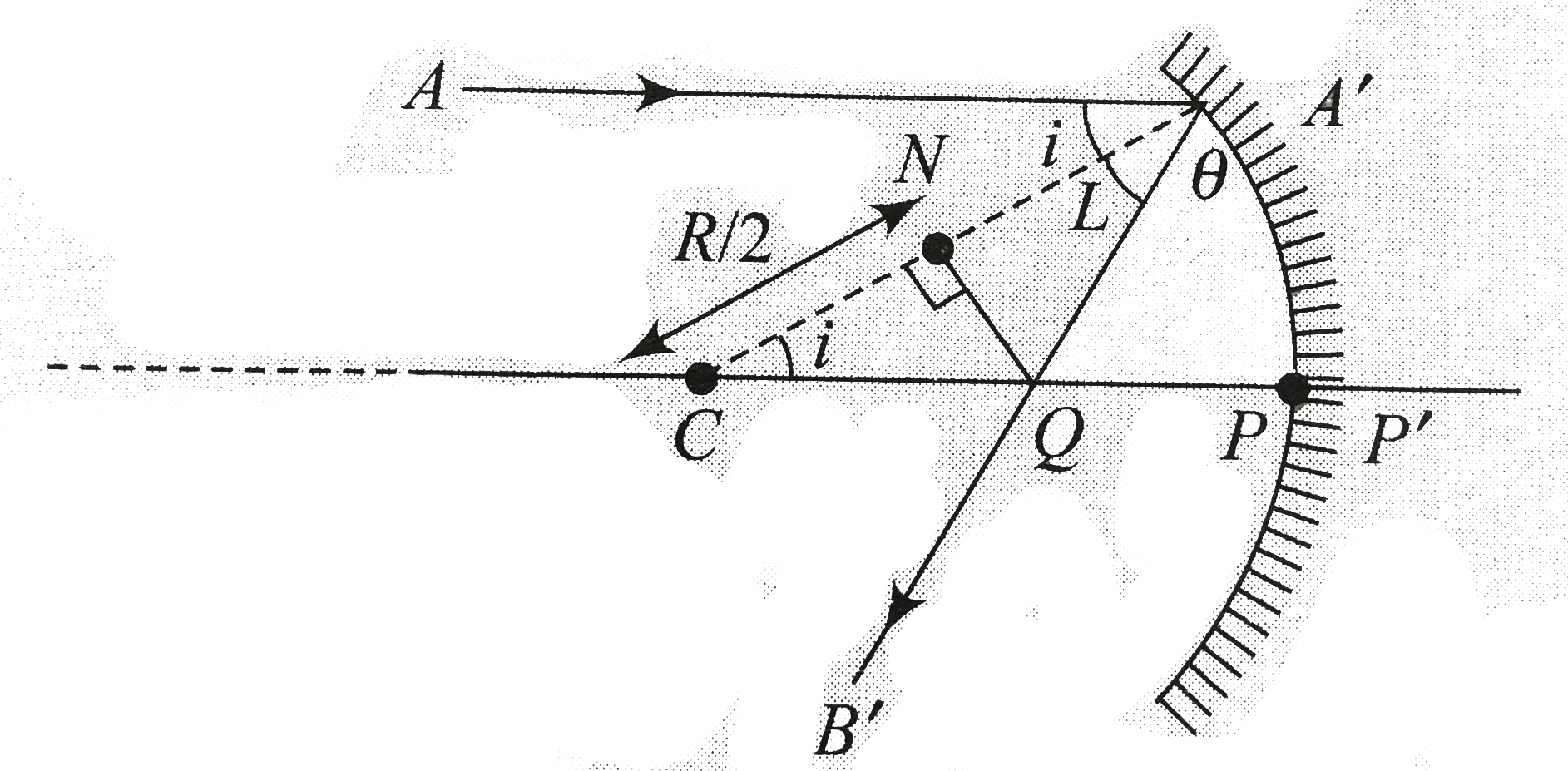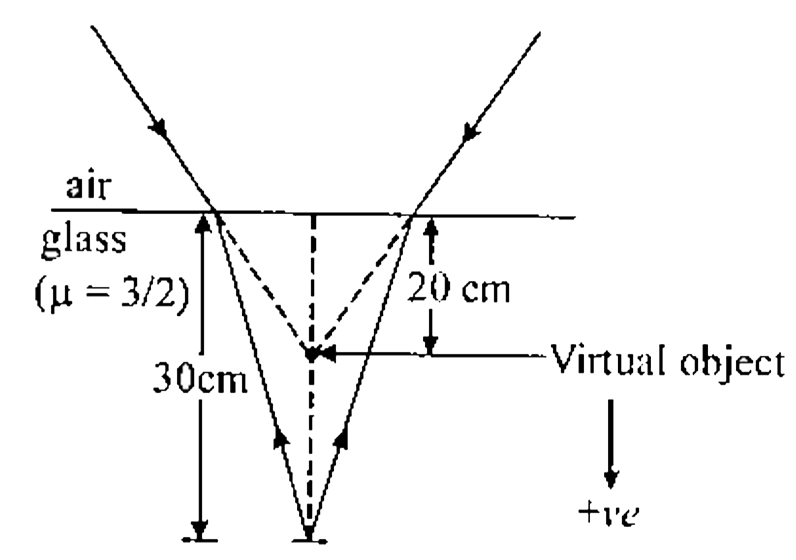Deviation of a ray incident on a converging lens
Find the point at which the first ray crosses the principal axis after refraction (Fig. 34-39). Also find its deviation.
Text Solution
We can see that the two refracted rays will meet at a point in the focal plane. Since the ray passing through the 
Optical center will pass undeviated, we can say that this meeting occurs at an angle of θ and hence at a distance fθ below the focus
Calculation : By the property of the similar triangles, we can say that
hx=fθf−x=ϕ.
Solving, we get
x=hfh+fθ and ϕ=h+fθf.

Therefore, the deviation is
θ−ϕ=hf
|
Topper's Solved these Questions
- GEOMETRICAL OPTICS : REFRACTIONBOOK - RESNICK AND HALLIDAYCHAPTER - GEOMETRICAL OPTICS : REFRACTIONEXERCISE - Check point
6 Videos
- GEOMETRICAL OPTICS : REFRACTIONBOOK - RESNICK AND HALLIDAYCHAPTER - GEOMETRICAL OPTICS : REFRACTIONEXERCISE - Problems
44 Videos
- GEOMETRICAL OPTICS : REFLECTION BOOK - RESNICK AND HALLIDAYCHAPTER - GEOMETRICAL OPTICS : REFLECTION EXERCISE - PRACTICE QUESTIONS (Integer Type)
3 Videos
- GRAVITATIONBOOK - RESNICK AND HALLIDAYCHAPTER - GRAVITATIONEXERCISE - PRACTICE QUESTIONS (INTEGER TYPE)
4 Videos
Similar Questions
Knowledge Check
A light ray is incident along the principal axis of a mirror after reflection ______.
Aretraces its pathBpasses through centre of curvatureCmakes zero angle with the normalDAll the aboveA light ray is incident along the principal axis of a mirror after reflection ______.
Aretraces its pathBpasses through centre of curvatureCmakes zero angle with the normalDAll the aboveAfter reflecton, a light ray which is incident along the principal axis of a mirror,
Aretraces its pathBpasses through center of curvatureCmakes zero angle with the normal.DAll the above.
Find the distance CQ if incident light ray parallel to principal axis is incident at an angle i. Also, find the distance CQ if i→0 .

View SolutionThe angle between the incident ray and the refracted ray of a prism is called angle of deviation.
View SolutionA ray of light after refraction through a concave lens becomes parallel to the principal axis after refraction through the concave lens. Explain with a ray diagram when this can happen.
View SolutionA ray of light passing through the principal focus of a convex lens after refraction
View SolutionDeviation minimum deviation condition in a prism, if a ray is incident at an angle at an angle 30∘, the angle between the emergent ray and the second refracting surface of the prism is
View Solution

